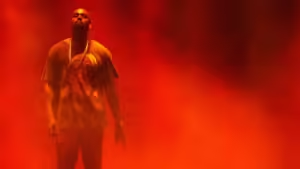
Discover the essence of "clochant" in our exploration of its cultural, historical, and philosophical meanings. Unveil its significance in art
Introduction
In the vast realm of language, certain words stand out not only for their linguistic intrigue but also for the stories they carry within their syllables. One such word, “clochant,” invites us into a world where meanings transcend mere definitions and venture into the realms of culture, history, and imagination.
Origins and Etymology
To unravel the essence of “clochant,” we first delve into its origins. Derived from the French verb “clocher,” meaning “to limp” or “to hobble,” the term “clochant” embodies a sense of irregularity or asymmetry. Linguistically, it pertains to something that is off-balance or askew, metaphorically echoing the imperfections that add character to the human experience.
Cultural and Historical Significance
Beyond its literal connotations, “clochant” holds cultural and historical significance across different contexts. In architecture, particularly in Gothic cathedrals, the term refers to the intentional imperfections designed into structures to avoid the appearance of arrogance in human craftsmanship—recognizing the inherent fallibility of mortal endeavors before the divine.
In literature and poetry, “clochant” can denote a rhythmic irregularity or a deliberate deviation from conventional meter, thereby infusing verses with a unique cadence that mirrors life’s unpredictability. This usage underscores the poetic license to embrace imperfections as part of artistic expression.
Philosophical Reflections
Philosophically, “clochant” invites contemplation on the nature of beauty and perfection. It challenges the notion that flawlessness equates to excellence, proposing instead that true depth and authenticity often emerge from the quirks and deviations that define individuality. In embracing what is “clochant,” one embraces the essence of humanity itself—a tapestry woven with threads of diversity and idiosyncrasies.
Contemporary Applications
In contemporary discourse, “clochant” finds resonance in discussions ranging from design aesthetics to personal development. Designers and artists often seek to incorporate elements of imperfection into their creations to evoke emotions and provoke thought, transcending sterile uniformity in favor of meaningful expression.
Conclusion
As we conclude our exploration of “clochant,” we recognize its role not merely as a word, but as a concept that transcends linguistic boundaries to illuminate deeper truths about human nature and creativity. Through its varied interpretations across time and disciplines, “clochant” invites us to celebrate imperfections, embrace asymmetry, and find beauty in the unexpected.
In essence, “clochant” beckons us to reimagine perfection not as flawlessness, but as a harmonious blend of strengths and imperfections—a testament to the richness of diversity in our world. Thus, the next time we encounter the term “clochant,” let us remember its profound message: in the tapestry of existence, it is often the irregular threads that weave the most compelling stories.
Read More:
Linuxia: A Comprehensive Overview of the Emerging Linux Distribution







